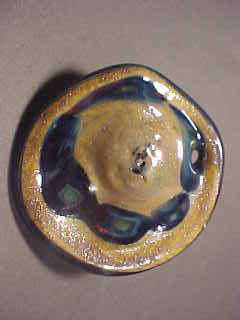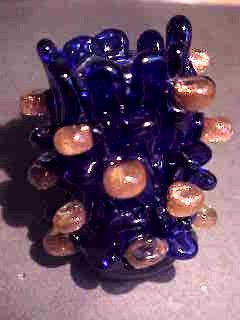|
Historical Notes | Glass Making | Virtual Trip | Information |
|
|
|
Like the city of Venice, Murano comprises a cluster of small islands, connected by bridges. It has been the center of the glassmaking industry since 1291 when the furnaces and glass craftsmen were moved here from the city, prompted by the risk of fire to the buildings and homes (which at that time were constructed almost entirely of wood) and the disagreeable effects of the smoke. The island of Murano is about a mile across the water from Venice and was already inhabited in Roman times. “Amurianum” was its original name. Used at first as shelter by refugess from Altino, Opitergio and Aquileia who escaped in the 5th Century from barbaric invasions, Murano soon became a fulcrum of important traffics and distinguished itself the glass art. Men and women from Oderzo later joined these settlers and by the 7th and 8th centuries, the island’s port of Sant’Erasmo was an important calling-place for merchant ships. Eventually, Murano grew in population and prosperity to such an extent as to reach its greatest splendor in the 16th century when many palaces and houses, churches and monasteries, gardens and orchards arose side by side with glass factories to demonstrate the prosperity of this wealthy community. So densely was the island populated that by th 11th century, the Doges were encouraging islander to move to Venice. After the 13th century Murano passed under the jurisdiction of a podesta (mayor) chosen from the ranks of the Venetian patricians, but despite this it continued to have its own Grand Council. It had a “Golden Book” in which were entered its original families who enjoyed special privileges so that a Veneto aristocrat could marry the daughter of a glass master without losing any of his claims to his noble titles. Just as Venice did, Murano too could coin annually. From the mid-14th century onwards, the artisans of Murano started to sell their products abroad. They quickly gained a reputation for producing small beads of glass and for the mirrors which became a major Murano export during the course of the 15th century. Within fifty years the island’s glasswork had lost much of it utilitarian character and had become a fully fledged art form. Because of the growing importance of the glass industry, its artisans had to submit to severe political restrictions in order to balance their very considerable privileges. By contrast with the rest of Europe, Venice did not require a man to belong to a glassmaking family as a condition for learning the art. Any talented apprentice could rise, step by step, through the ranks to become a master glassmaker. However, the glassmakers were forbidden to emigrate from Venice on pain of sequestration of all their goods. Nevertheless, it is known that in the 16th century several glassmakers did succeed in setting up factories in Northern Europe, where they also flourished. Independent until 1924, Murano boasts a coat-of-arms which is a cock with a snake in its beak and a fox on its back, symbolizing surveillance, shrewdness and prudence. Murano is now populated with approximately 6,000 “Muranese” residents. |

